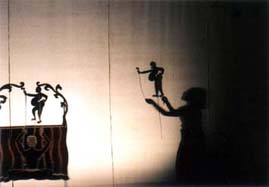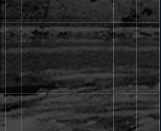
Photo
Copyright@ Mara Lavitt |
Nonetheless,
four Cambodians came to work at the Flying Circus laboratory, including
the dancer Kim Bun Thom and the puppet master Mann Kosal. Keng Sen
found them eager and fully able to participate, to improvise within
their own disciplines, and to open up their lives to other artists
as they all engaged with the complex world around them. Encouraged,
the director returned to Cambodia in January 2001 and met with Em
Theay and her oldest daughter, Thong Kim Ann, also a dancer who
had taken over many of her mother’s roles. They talked for
a week, six hours a day, discussing the implications of telling
the story of their lives in public. "I wanted to feel that
we could be on as equal a plane as possible," recalls the director.
"I didn’t want to come in to `buy’ their stories.
I constantly asked how could we present this material with the kind
of sensitivity that would allow the project to be part of a healing
process."
Em Theay gave her blessing. There would be two exploratory workshops
in February and in May. Participating would be the kru and her daughter,
Flying Circus participants Bun Thom and Mann, Cambodian translator
Sotho Kulikar, Singaporean videographer and performer Noorlinah
Mohamed, TheatreWorks producer Tay Tong, and Keng Sen.
The temple city of Angkor was chosen for the first workshop. Keng
Sen did not want to remove the artists from their culture, but he
did want to take them away from their homes in Phnom Penh. Not only
was there the practical consideration of creating a focused, protective
environment unbothered by everyday distractions, there was also
a symbolic aspect to the separation. Pol Pot’s first action
when he came to power in 1975 was to empty out the capital city.
At the time it seemed somehow a reasonable if extreme strategy to
cleanse the country of the unbridled corruption associated with
overthrown dictator, Lon Nol. The Khmer Rouge announced that the
evacuation would be for only three days. Who could imagine that
few of the city’s citizens would see their home again for at
least four years, and tens of thousands--particularly artists, intellectuals
and professional people--would never return?
|
|


